What comes to mind when you think about your health? Is it a balanced diet? Regular check-ups? Or perhaps it’s those moments of physical activity that punctuate your day. It might surprise you to learn just how integral Regular exercise is in preventing disease. Let’s break it down together.
Understanding the Basics of Disease Prevention
disease prevention is essentially about reducing the likelihood of developing various health conditions in the future. This involves making conscious choices about what you eat, how you live, and, crucially, how active you choose to be. The good news is that physical activity is a key player in this equation.
The Role of Physical Activity
Physical activity encompasses a variety of movements you engage in daily, from brisk walking to vigorous workouts. It doesn’t necessarily mean spending hours in a gym. Rather, it’s about weaving movement into your routine, enhancing your overall well-being. Studies consistently show that regular physical activity can help mitigate the risk of several diseases, including heart disease, diabetes, and even certain cancers.
Why Does This Matter?
In our fast-paced world, it can be easy to overlook health until an issue arises. Recognizing that you can take proactive steps to safeguard your health is empowering. Engaging in regular physical activity not only improves your current state of health but can also set the stage for a more vibrant future, full of life and energy.
The Connection Between Exercise and Disease
By now, you might be wondering exactly how physical activity can help in preventing various diseases. Let’s break this down into some key benefits of exercise.
Cardiovascular Health
How Exercise Helps: Regular physical activity strengthens your heart and improves circulation. When you exercise, your heart works harder, pumping blood more efficiently and lowering your blood pressure over time.
Statistics: According to the American Heart Association, people who engage in moderate-intensity exercise for at least 150 minutes a week can lower their risk of heart disease significantly.
Weight Management
Maintaining a Healthy Weight: Finding balance can be tricky, but physical activity plays a vital role in managing your weight. When paired with a proper diet, regular workouts help you burn calories that can lead to weight loss or maintenance.
The Reality Check: Even small changes can spark significant results. Simple activities, like taking the stairs instead of the elevator, can make a difference over time.
Diabetes Prevention
Reducing Your Risk: Regular exercise helps regulate blood sugar levels and improves insulin sensitivity, two crucial factors in preventing Type 2 diabetes.
Key Insights: Research indicates that people who maintain a physically active lifestyle have a 30 to 50 percent lower risk of developing Type 2 diabetes compared to those who are sedentary.
Strengthening Muscles and Bones
The Importance of Resistance Training: Strength training isn’t just for bodybuilders. Incorporating resistance exercises into your routine can increase bone density and muscle mass, which is especially important as you age.
Long-term Benefits: This not only helps in reducing the risk of osteoporosis but also enhances overall functional ability in daily tasks.
Mental Health Benefits
Mood Booster: Physical activity has been shown to release endorphins, also known as the ‘feel-good’ hormones. This can lead to reduced feelings of anxiety and depression, enhancing your overall mental health.
Mind-Body Connection: Being physically active encourages mindfulness. The awareness of your body in movement can foster a greater appreciation for your overall health.
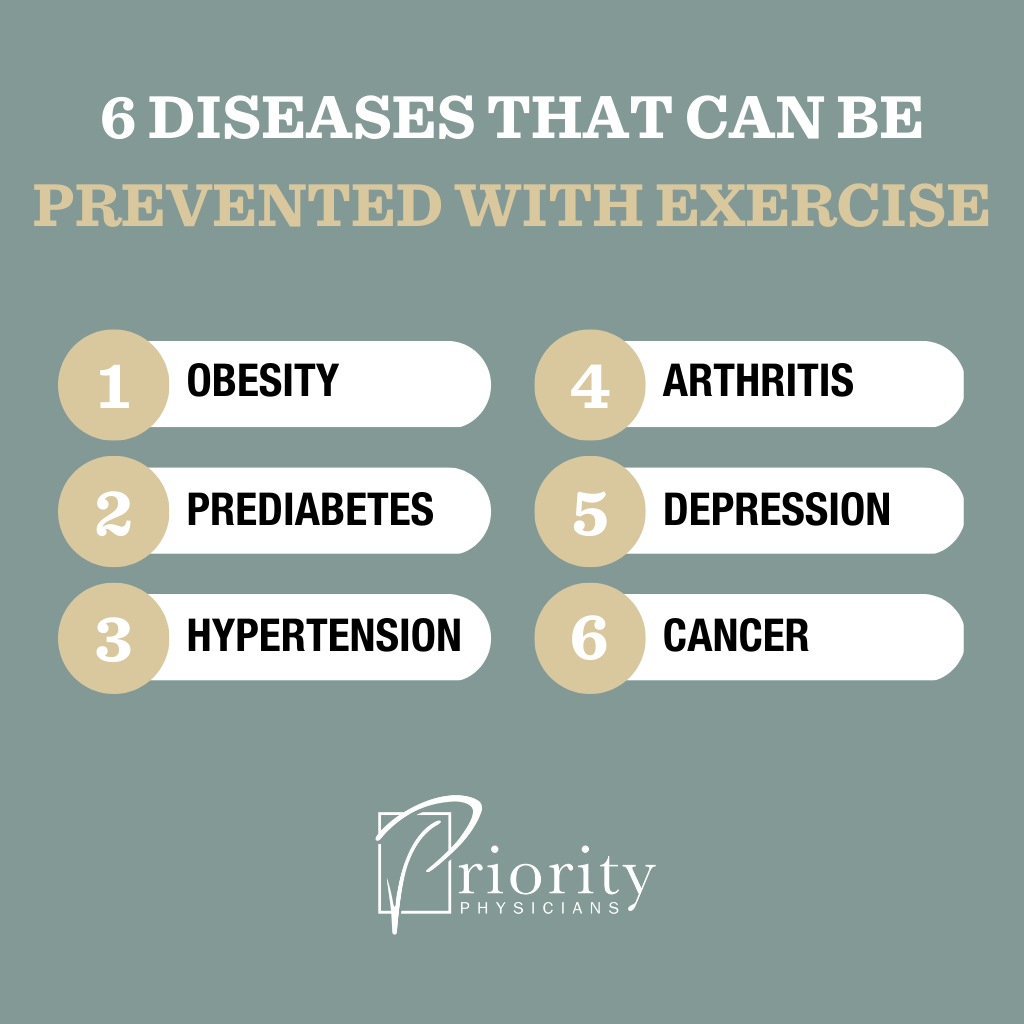
This image is property of priorityphysicianspc.com.
Types of Physical Activity
You might be thinking, “What kind of physical activity should I pursue?” The answer is: it depends on your preferences! Here’s a categorization to consider:
| Type of Activity | Examples | Frequency |
|---|---|---|
| Aerobic (Cardio) | Running, cycling, swimming | At least 150 mins/week (moderate) or 75 mins (vigorous) |
| Strength Training | Weight lifting, resistance bands | At least 2 days/week |
| Flexibility | Yoga, stretching | 2-3 days/week |
| Balance | Tai Chi, balance exercises | 3-4 days/week (especially for older adults) |
Finding Your Fit
Finding a type of activity that you enjoy is crucial. Think about what raises your heart rate, what leaves you feeling invigorated, and what you can consistently do.
Setting Realistic Goals
Once you choose an activity, setting realistic goals will keep your motivation alive. Consider these steps:
Start Small and Build Gradually
Rather than jumping into an intense workout regimen, begin with small, achievable goals. This might involve walking for 10 minutes a day or taking a dance class weekly.
Keep Track of Your Progress
Whether through a fitness app or a simple notebook, tracking how much you exercise can be incredibly motivating. Celebrate the small victories, whether it’s completing a certain number of workouts per week or running a bit farther than you did last time.
Incorporate Variety
Boredom can be a significant barrier in sticking with a routine. Mixing up your activities can keep it fresh. Try alternating between cycling, swimming, and strength training to maintain enthusiasm.
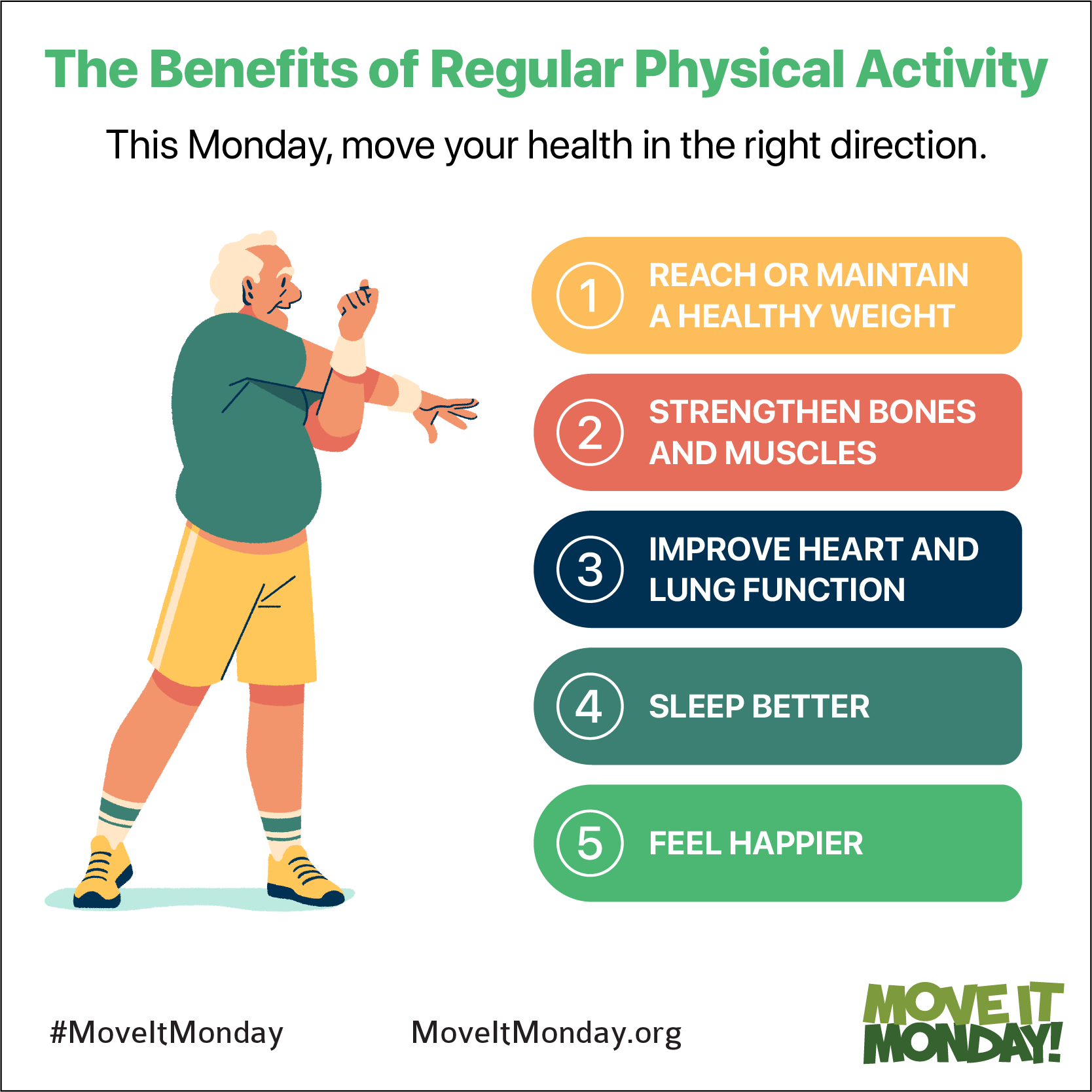
This image is property of www.mondaycampaigns.org.
Overcoming Barriers
It’s entirely normal to encounter challenges when trying to maintain a regular exercise routine. Being aware of potential hurdles can help you tackle them head-on.
Time Constraints
If time is a concern, try breaking your workouts into shorter sessions throughout the day. Even 10-15 minute bursts can make a difference!
Lack of Motivation
If motivation wanes, consider finding a workout buddy or joining classes. The social aspect can boost your enthusiasm to stay active.
Physical Limitations
If you have health issues or injuries, seek professional advice to tailor a safe and effective exercise plan.
Monitoring Your Health
Before embarking on any new physical activity routine, especially if you have existing health concerns, consulting with a healthcare professional is a wise step. They can provide guidance tailored to your personal situation, ensuring you don’t inadvertently overstep your boundaries.
Regular Check-Ups
Establishing a relationship with your healthcare provider can be extremely beneficial. Regular assessments can help monitor any changes in your health, enabling you to adjust your physical activity levels accordingly.
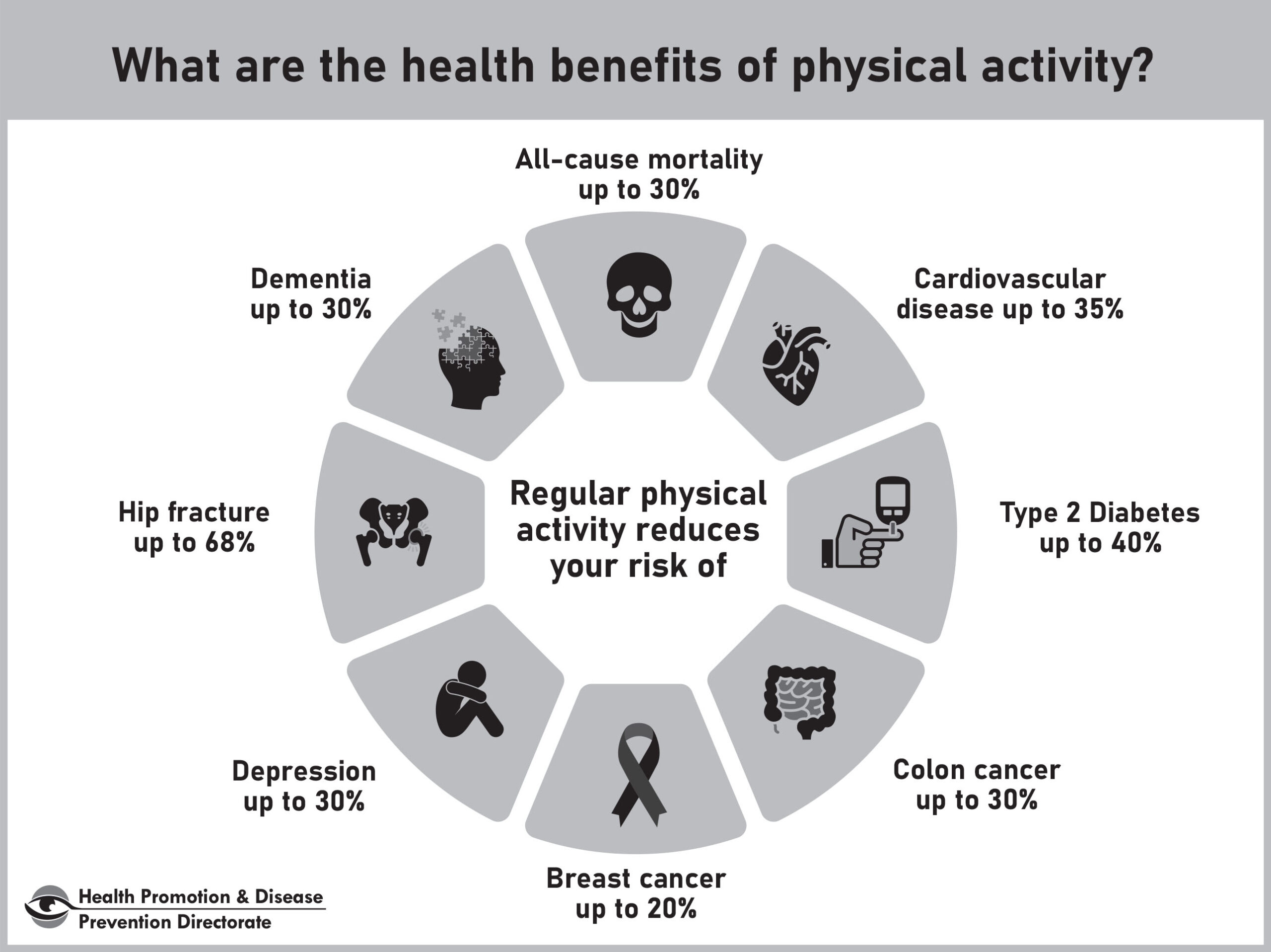
This image is property of hpdp.gov.mt.
Nutrition’s Role in Health Maintenance
Physical activity is only half the battle when it comes to disease prevention. Nutrition intertwined with your activity can amplify the positive effects on your health.
Balanced Diet
Focus on a diet that includes plenty of fruits, vegetables, whole grains, lean proteins, and healthy fats. This balanced intake will provide the nutrients necessary to fuel your body and support your exercise regimen.
Hydration is Key
Staying well-hydrated is equally important, especially if you’re engaging in physical activity. Water plays a crucial role in maintaining physical performance, especially during warmer months or intense workouts.
The Power of a Holistic Approach
Taking care of your health goes beyond just diet and exercise. It involves a holistic approach that considers your emotional well-being, sleep quality, and stress management.
Mental Wellness
Prioritizing mental health through self-care practices, meditation, or spending time in nature can create a synergistic effect with your physical activity efforts.
Quality Sleep
Don’t underestimate the importance of quality sleep. It’s during deep slumber that your body repairs and rejuvenates itself.
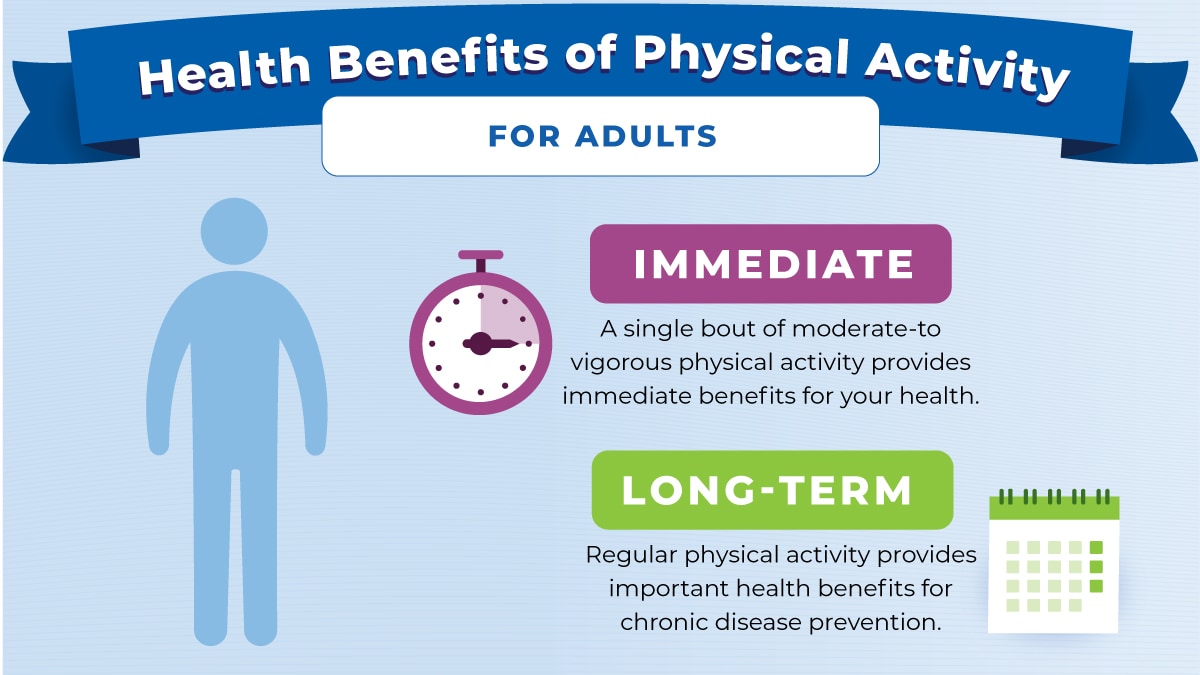
This image is property of www.cdc.gov.
Long-term Perspective
Many people think about their health in the short-term, focusing on quick fixes or immediate results. However, disease prevention through regular physical activity is a long game. It’s about creating sustainable habits that evolve with you.
Keep Learning and Adapting
Stay informed about health and wellness trends, and adapt your routines as necessary. Experimenting with new activities or approaches can enhance your enjoyment and effectiveness.
Embrace Imperfection
Understanding that setbacks happen is part of the journey. Recognize that progress isn’t always linear; ups and downs are to be expected. The key is to keep moving forward at your own pace.
Conclusion
Taking proactive steps through regular physical activity can indeed help prevent disease and promote a healthier, more fulfilled life. By embracing an active lifestyle, setting realistic goals, and supporting your journey with good nutrition and mental wellness, you’re investing in your future self. Enjoy this journey— it’s not just about the end goal but the experience, the friendships, and the satisfaction of caring for your body.
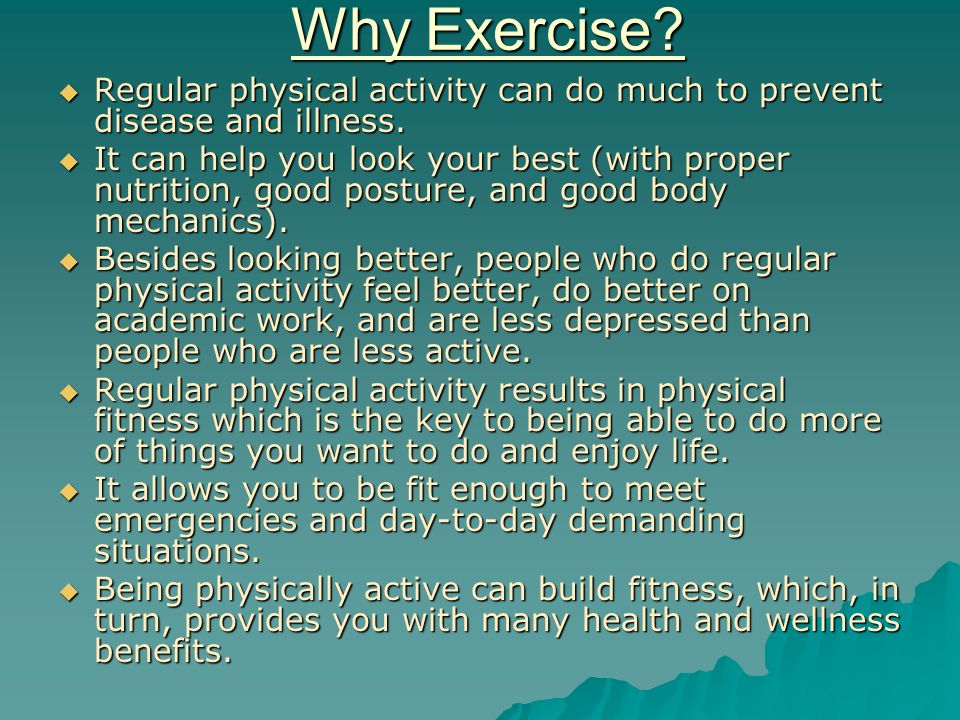
This image is property of images.slideplayer.com.